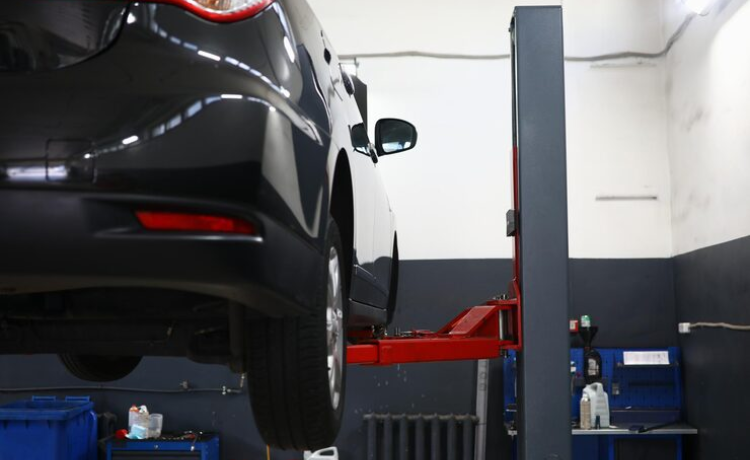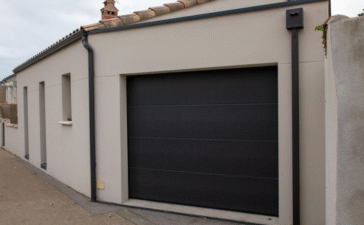For many car enthusiasts and home mechanics, the garage is more than just a place to park. It’s a workshop, a storage area, and a sanctuary. However, limited space can quickly turn this haven into a cluttered and inefficient workspace. A car lift for garage is a transformative solution, offering a way to maximize your available area, streamline vehicle maintenance, and significantly improve safety.
This guide will walk you through everything you need to know about selecting, installing, and maintaining a garage car lift. We will cover the different types available, help you assess your specific needs, and provide practical advice to ensure you make a confident and informed decision. By the end, you’ll understand how to choose the perfect car lift that fits your space, budget, and passion for all things automotive.
What Are the Different Types of car lift for garage?
Understanding the various types of car lifts is the first step in finding the right one for your garage. Each style has unique features, benefits, and space requirements.
Two-Post Car Lifts
A two-post car lift is one of the most common sights in professional auto shops and is a popular choice for serious home mechanics. These lifts feature two sturdy columns and supportive arms that swing underneath the vehicle to engage its frame. They provide excellent access to the underside of the car, making them ideal for tasks like exhaust work, transmission repairs, and comprehensive inspections. A hydraulic two-post lift uses fluid pressure to raise the vehicle smoothly and securely. When looking for the best two-post lift for a home garage, consider models with both symmetric and asymmetric arm configurations for greater versatility.
Four-Post Car Lifts
A four-post lift for a garage is known for its exceptional stability and versatility. This type of lift supports the vehicle by its tires on two runways, making it incredibly simple to drive a car onto it. This design makes it an excellent choice for vehicle storage, as you can park a second car underneath, effectively doubling your parking space. Four-post lifts are also great for wheel alignments, oil changes, and general inspections. Their robust construction means they are often considered a heavy-duty car lift, capable of handling larger and heavier vehicles with ease.
Scissor Lifts
For garages with limited space, particularly low ceilings, a scissor lift is an excellent option. These lifts use an accordion-like mechanism to raise the vehicle. Compact scissor lifts can be surface-mounted or even flush-mounted into the garage floor, making them almost disappear when not in use. They come in various heights, from low-rise models perfect for wheel and brake work to full-rise versions that offer complete under-car access. Their design makes them one of the more portable car lifts for garages, with some models featuring wheels for easy movement.
Portable Car Lifts
Mobility is a major advantage for home mechanics who may not have a dedicated bay for a permanent lift. Portable garage lifts, including some scissor lifts and single-post mobile lifts, offer the flexibility to be moved and stored when not needed. These lifts are typically lighter and more compact. A mobile car lift is perfect for performing routine maintenance tasks in different areas of your garage or even on a level driveway, providing a significant upgrade in safety and convenience over traditional jacks and stands.
How to Choose the Best Car Lift for Garage
With several types to choose from, selecting the best car lift depends on a careful evaluation of your specific circumstances.
Key Factors to Consider
First, measure your garage space accurately. You need to account for the lift’s footprint, the height of your ceiling, and the dimensions of the vehicles you plan to lift. Ceiling height is often the most critical limitation.
Next, consider weight capacity. A car lift’s capacity should safely exceed the weight of your heaviest vehicle. It’s always better to have a higher capacity than you think you need.
Your budget will also play a significant role. Affordable car lift options are available, but remember that price often reflects build quality, features, and brand reputation. Installation costs should also be factored into your total budget.
Finally, think about your intended use. Are you primarily looking for storage, or do you need full access for complex repairs? A four-post lift excels at storage, while a two-post lift is superior for maintenance that requires wheel removal. The best car lift for garage is often a scissor or portable model.
A Guide to Car Lift Installation
Proper installation is crucial for the safe and effective operation of your car lift. While some experienced DIYers may tackle the job, professional installation is often recommended.
Preparation and Process
Before starting an installing a car lift project, ensure your garage floor meets the manufacturer’s specifications for concrete thickness and strength typically at least 4 inches of 3000 PSI concrete. Clear the installation area completely.
The tools needed will vary by lift type but generally include a rotary hammer drill, wrenches, a torque wrench, and a level. The garage lift installation guide provided by the manufacturer is your most important tool; follow it meticulously.
Key considerations include electrical requirements, as many lifts need a dedicated 220V circuit. Proper anchoring of the lift’s posts to the concrete floor is non-negotiable for safety. If your floor doesn’t meet the requirements, you may need to pour new concrete footings.
Understanding Space Requirements for Car Lifts
Calculating the necessary garage space for a car lift is essential before you make a purchase. For a two-post lift, you’ll need enough width for the posts plus clearance for car doors to open. A typical bay is around 12 feet wide. Ceiling height is critical; you need to accommodate the lift’s maximum height plus the height of the vehicle on it. A 12-foot ceiling is a common minimum for lifting most passenger cars to full height.
Space-efficient car lifts, like mid-rise scissor lifts, can operate with ceilings as low as 9 or 10 feet, making them a viable option for more standard garages.
What Do Car Lifts for Garages Cost?
The price of a car lift varies widely based on type, brand, and capacity. The cost of a two-post lift from a reputable brand typically starts around $3,000 to $5,000. Four-post lifts for storage and general service are often in a similar range. High-capacity or premium models can exceed $10,000.
Affordable car lifts for garages, such as portable scissor lifts, can be found for under $2,500. Remember to factor in shipping and installation costs, which can add another $500 to $1,500 to the total.
The Benefits of a car lift for garage
Installing a car lift offers numerous advantages that go beyond simple convenience.
Enhanced Vehicle Maintenance: A lift provides unparalleled access to the underside of your car, making jobs like oil changes, exhaust repairs, and transmission work faster, easier, and more comfortable.
Space Optimization: A four-post lift can instantly maximize garage space by allowing you to park two vehicles in a single bay. This is a game-changer for collectors or multi-car households with limited garage square footage.
Improved Safety and Ergonomics: Working under a vehicle supported by a certified lift is far safer than relying on jack stands. It also eliminates the need to lie on a cold, hard floor, reducing strain on your back and body. A lift helps improve garage organization by creating a dedicated and safe service area.
Car Lift Safety is Paramount
Ensuring secure car lift operation should always be your top priority. Modern lifts come with several built-in safety features. These include automatic locking mechanisms that engage at various height intervals, hydraulic flow restrictors to prevent a sudden drop in case of a hose failure, and emergency stop buttons.
Always adhere to the lift’s specified weight limit and ensure the vehicle is properly balanced before lifting. Regular inspections of cables, locks, and hydraulic components are essential for maintaining car lift safety.
Car Lift Maintenance and Longevity
To ensure your investment lasts for years, a routine maintenance schedule is key. Maintaining a car lift is straightforward. This includes lubricating moving parts like pulleys and pivot points, checking the hydraulic fluid level and condition, and visually inspecting all cables and hoses for wear or damage.
Consult your owner’s manual for specific car lift maintenance tips and schedules. With proper long-term care, a quality car lift can provide decades of reliable service.
Also Read: “craftsman garage door opener“
Making Your Final Choice
Choosing the best garage lift for home use is a significant decision that can revolutionize how you use your space and work on your vehicles. By carefully considering your garage dimensions, budget, and how you plan to use the lift, you can choose the perfect car lift for your needs. Prioritize safety above all else, and invest in a quality product from a reputable manufacturer. With the right lift, your garage will become the ultimate workspace for any automotive project you can dream of.
Frequently Asked Questions
What is the best car lift for garage?
For small garages, especially those with lower ceilings (under 10 feet), a low-rise or mid-rise scissor lift is often the best choice. These lifts are compact, can be portable, and some models can be flush-mounted to save floor space. A portable single-post lift is another space-efficient option for maintenance tasks.
How much space do I need for a car lift for garage?
The space required depends on the lift type. For a two-post lift, a common recommendation is a bay width of at least 12 feet and a ceiling height of 12 feet or more to lift a standard vehicle to full working height. A four-post lift requires a similar bay width, but the length must accommodate the runways. Always measure your vehicle and check the manufacturer’s specifications for the lift’s footprint and operational height requirements before purchasing.
How much does a car lift cost?
The cost of a car lift can range from approximately $2,000 for a portable scissor lift to over $10,000 for a heavy-duty, commercial-grade four-post lift. A good quality two-post or four-post lift for home use typically costs between $3,000 and $6,000, plus another $500 to $1,500 for professional installation.
Do I need a special floor for a car lift?
Yes, a proper foundation is crucial for safety. Most two-post and four-post lifts require a reinforced concrete floor that is at least 4 inches thick with a compressive strength of at least 3,000 PSI. The concrete must be fully cured and level. Always verify the specific floor requirements in the lift’s installation manual.
Can I install a car lift myself?
While some car lifts are marketed as DIY-friendly, installation can be a complex and physically demanding process that requires specialized tools and knowledge. Due to the significant safety implications, professional installation is highly recommended to ensure the lift is assembled and anchored correctly according to manufacturer standards.
Are portable car lifts effective for home garages?
Yes, portable car lifts are very effective for home garages. They offer great flexibility, allowing you to perform maintenance like brake jobs, tire rotations, and detailing without committing to a permanent installation. While they may not offer the same lifting height or under-car access as a two-post lift, their mobility and smaller footprint make them an excellent and safe alternative to jacks and stands.












